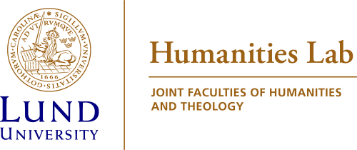Affiliated platforms
LAMiNATE
LAMiNATE is a cross-disciplinary interdepartmental research platform dedicated to all areas of language acquisition, multilingualism, and language teaching/assessment.
DigitalHistory@Lund
DigitalHistory@Lund is a research platform that aims at promoting digital history at Lund University and beyond. It is a collaboration between the Section for Media History, Lund Centre for the History of Knowledge (LUCK) and the Lund University Humanities Lab.
Digital Integration Across Disciplines: DIAD
The DIAD platform breaks new ground in cultural heritage documentation by pursuing a comprehensive synthesis of two cutting-edge, but previously unconnected, fields: Digital Archaeology and Language Documentation. Through systematic conceptual, theoretical and methodological exchange and mutual enrichment, DIAD aims to set a new standard in the creation of digital cultural heritage records. It represents a novel collaboration between the Department of Archaeology and Ancient History, the Linguistics division at the Centre for Languages and Literature, and the Humanities Lab.
For more information, see the DIAD webpage.
THE LANG-TRACK-APP: Studying exposure to and use of a new language using smartphone technology
By introducing an innovative smartphone technology, this project will study when, where, and how often language learners are exposed to and involved in target-language use in different learning environments outside educational contexts. This step is crucial to improve our understanding of the challenges of language learning outside of classrooms. In two case studies, we will contrast newly arrived migrants in Sweden learning Swedish, and Swedish Erasmus students staying abroad learning a foreign language.
The research questions we ask are a) what characterises exposure to and use of the target languages in the two learning environments; b) to what extent differences in organized leisure time activities (e.g. sports, music, handicrafts, etc.) affect the quantity and quality of target-language exposure and/or use; and c) if gains in language proficiency can be related to quantity and quality of target-language exposure and/or use.
We develop a smartphone app where learners are regularly prompted to report their experiences with the target language and take language tests. The novelty of this method will allow for both more participants and more accurate measurements of target-language exposure and use over time compared to previous studies.
For second language acquisition research, the project will further our understanding of the role of language exposure and use for language learning by developing a tool for a more accurate measure of these constructs. Moreover, the study of learners in two different learning environments will allow researchers, educators, and other stakeholders to gain vital insights into language learning conditions outside of the educational context.
The project is a collaboration between the Centre for Languages and Literature, and Lund University Humanities Lab.
Project details can be found in the research portal.
